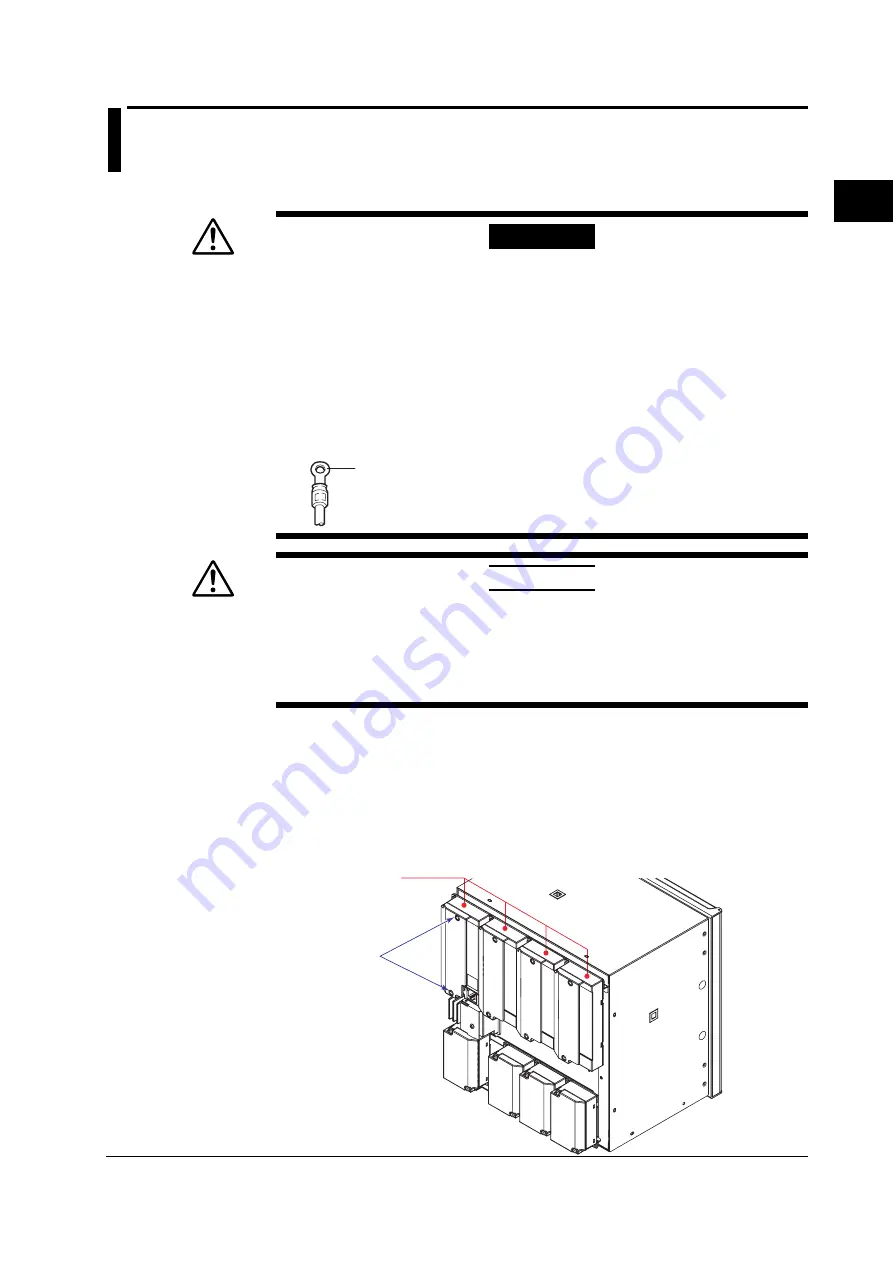
2-9
IM 04P02B01-01E
Before Using the Recorder
2
2.4
Optional Terminal Wiring
General Precautions to be Taken While Wiring the Input/Output Signal Wires
WARNING
• To prevent electric shock while wiring, ensure that the power supply source is
turned OFF.
• If a voltage of more than 30 VAC or 60 VDC is to be applied to the output
terminals, use ring-tongue crimp-on lugs with insulation sleeves on all terminals
to prevent the wires from slipping out when the screws become loose.
Furthermore, use double-insulated wires (dielectric strength of 2300 VAC or
more) for the signal wires on which a voltage of more than 30 VAC or 60 VDC is
to be applied. For all other wires, use basic insulated wires (dielectric strength
of 1390 VAC). To prevent electric shock, attach the terminal cover after wiring
and make sure not to touch the terminals.
Crimp-on lug with insulation sleeves
(for 4 mm screws)
CAUTION
• To prevent fire, use signal wires having a temperature rating of 70
°
C or more.
• If a strong tension is applied to the cable wired to the recorder, the terminals of
the recorder and/or the cable can be damaged. In order to prevent tension from
being applied directly on the terminals, fasten all wiring cables to the rear of the
mounting panel.
Arrangement of the Optional Terminals
As shown in the figure below, the optional terminal block is located on the rear panel.
The optional terminal block is provided on the recorder when an option that requires
input/output is installed such as the alarm output relay (/A1, /A2, /A3, /A4 or /A5 option),
FAIL/chart end output (/F1 option), and remote control function (/R1 option). A terminal
cover is screwed in place on the optional terminal block. A label indicating the terminal
arrangement is affixed to the terminal block.
Optional terminal block
Terminal cover
attachment screws
















































